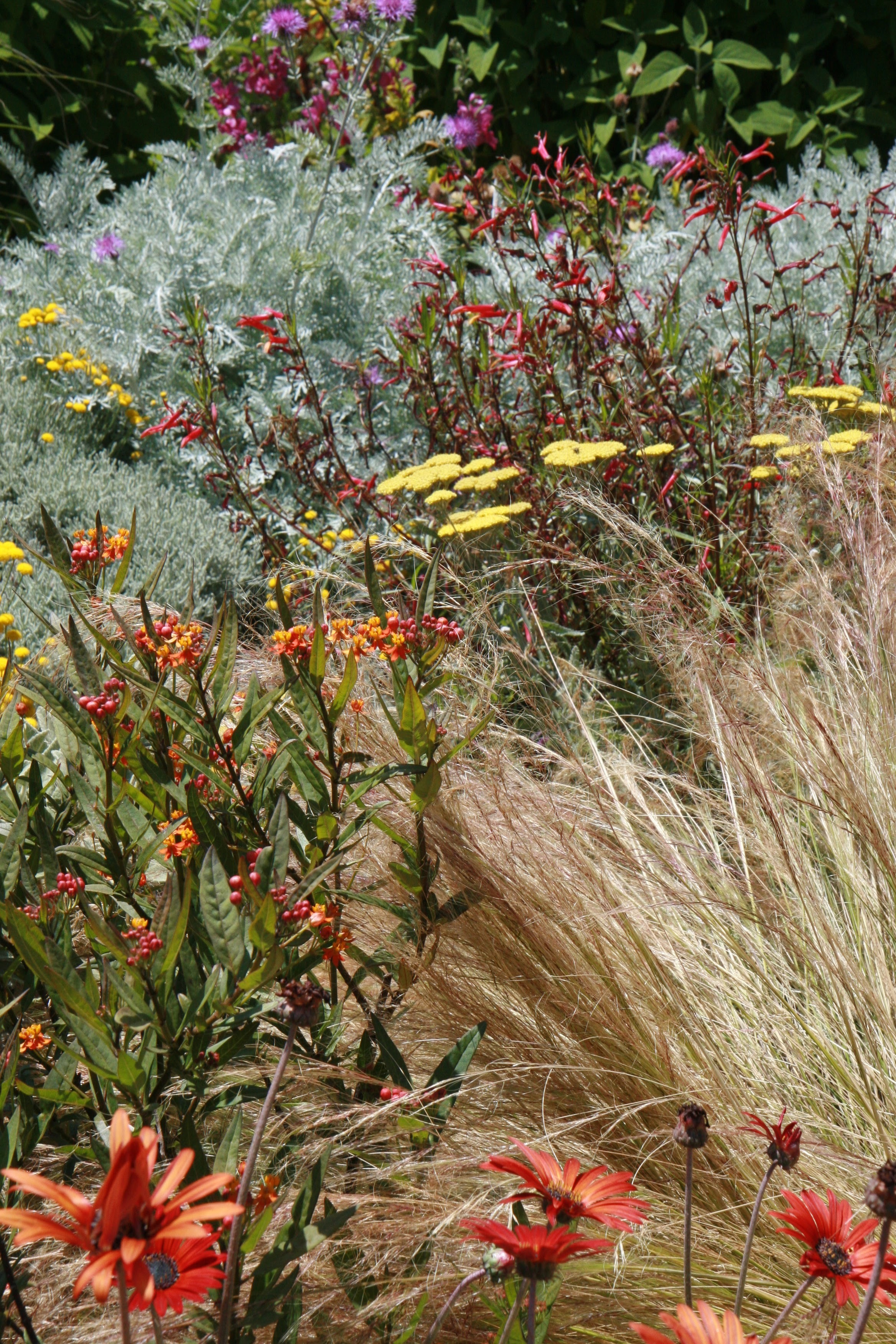Nostalgia and the Transplanted Gardener
/Many of my most precious memories are tied up with plants. When my mother moved to a new house, she took slips from her mother’s (my grandmother’s) lilacs to plant by the kitchen window. Now when I smell the heavy, dreamy fragrance of lilacs, the sweetness brings three generations of gardeners together. When I was born, my mother and father planted a Japanese maple sapling in their front lawn. “They are slow-growing,” my mother explained, “so we thought you could grow up together.”
Lilac at GFE.
Like many Californians, I am a transplant from another climate zone. The plants in my personal stories - the lilacs, maples, and lawns of New England - were ones I wanted in my California story. I’ve planted and cared for them here in the Bay Area. But unfortunately, people travel to different climates more easily than plants. Most Japanese maples in San Francisco are showing burned leaves by mid-summer. They object to wind, dry soils, and salty air. Many lilac varieties bloom erratically or not at all without a cold winter. Lawns are not a sustainable choice in a state constantly troubled by water shortages.
A Deeper Look
To connect with the gardening stories from my family’s past, I have to look deeper than the specific plants. My grandmother’s garden echoed the seasons in the wildwood. Her ferns and Jack-in-the-Pulpits were the same ones blooming in the local forests. The soft, natural shapes in her garden followed Nature’s lead with generous and curving beds of plants that looked as though they had grown there on their own. The succession of bloom and fruit and fall color were modeled on the successive wonders of the unfolding year.
I can have all these qualities in my California garden, if I follow the inspiration of my grandmother’s garden without trying to copy the specific plantings. The California native landscapes offer the variety of shapes and colors I need. I can bring the beauty of a seasonal creek bed, wet in winter and dry in summer into my garden. Or perhaps I’ll mimic the deep reverence of a redwood forest understory, or the bright generosity of a seaside cliff in spring sunshine, buzzing with pollinators.
Iris at GFE.
By translating the spirit of my grandmother’s garden into the language and palette of California climate appropriate plants, I can have my memories and still do what she did: grow a healthy and sustainable garden with love and respect for nature.
The Garden Echoes Nature
This month at Garden for the Environment, the drought-tolerant demonstration beds by the south gate of the garden echo the colors and textures of a California seaside meadow. In early summer, as California seaside soils dry out from winter rain and the salty sea air rolls in with marine fog and wind, tough summer meadow plants are blooming amid golden flowering grasses. At GFE, their garden hybrid relatives are putting on the same glamorous look. The gorgeous orange of self-seeded California poppy contrasts with the yellow button flowers and silvery foliage of lavender cotton. Behind them rise the soft, flat butterfly platforms of ‘Moonshine’ yarrow blooming next to the bright orange tubular flowers of Lobelia laxiflora, a southwest desert native. Golden, windswept Mexican feather grass completes the picture.
California poppy.
Lobelia, yarrow and Mexican feather grass.
Lavender cotton.
On the other side of the pathway, look for self-seeded sweet alyssum and poppies backed by pink flowering variegated thymes. Above them Asteriscus maritimus ‘Gold Coin’ opens its yellow daisy eyes, surprised by the brilliant brick-red of ‘Papricka’ yarrow. Graceful and tall, fernleaf lavender stands at attention to anchor the view.
New Memories
The Mediterranean climate garden has its own magic and mystery. My children’s memories will be full. True, they won’t have my memories of mown grass, thunderstorms and lightening bugs. But they will have the vivid summertime jumble of bougainvilleas, plum blossoms in January rain, springtime Ceanothus (California Lilac) singing with tiny wasps and bumbling bees. These are the fragrances, colors, and sounds that will nourish their sweetest remembrance.








